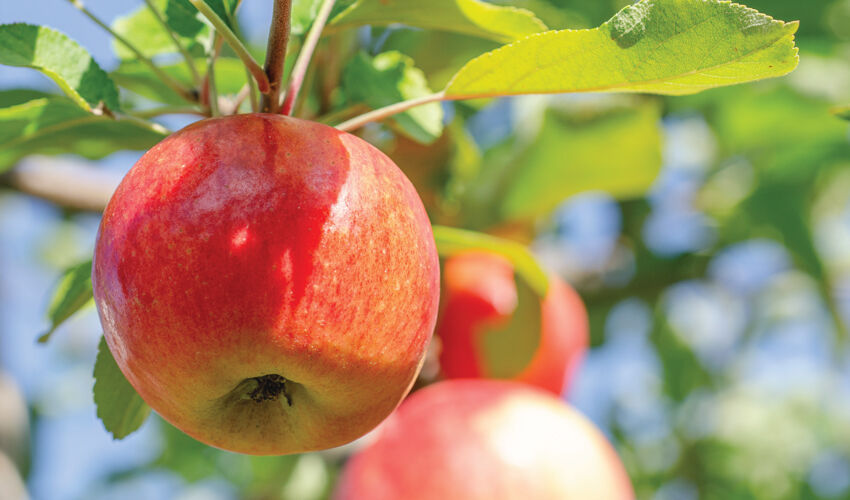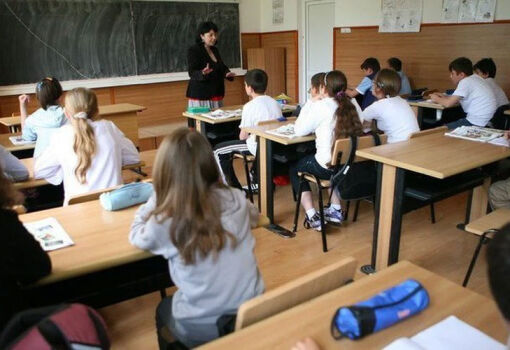
At first glance, it may seem that the situation with the apple harvest will develop in approximately the same direction as with the grape harvest. Thus, the executive director of Moldova Fruct, Iurie Fala, has already publicly complained: “the fruits in the orchards have started to crack due to excessive moisture, and such products cannot be sold on the fresh market”. Moreover, many farmers claim that they are facing the “problem of fallen fruit” – falling fruit. And an apple “from the ground” is at best raw material for processing, at worst – losses. That is, in the worst case scenario, it can be assumed that the pessimistic summer forecast of this year’s apple harvest, which, according to the industry association, is more than modest 277 thousand tons, will have to be further reduced.
However, some specialists of the fruit-growing industry believe that things may turn out quite differently. After the drought of the second half of summer, apples absorb the moisture of the fall rains like a sponge (well, or like sugar beets). The fruit quickly gains weight and caliber. From which they crack. But this process is not observed in all orchards. Apples of medium- and late-ripening red varieties are more resistant to periodic excess moisture, and, apparently, can be better prepared for storage. Apples of yellow and green varieties are more sensitive to sudden changes in weather conditions, they mostly crack after rains. That is, they need urgent realization.
Nevertheless, October precipitation is likely to add a number of tons to the apple crop rather than take it away. The buyers of these products – both for the “fresh market” and for industrial processing – already now believe that the harvest-2025 of apples in Moldova will not be lower than 300 thousand tons. Some of them even tend to hope that the gross harvest of these main Moldovan fruits will not be lower than last year. And this is according to statistical data – 408 thousand tons. “An example for imitation” in this case is neighboring Ukraine, where weather conditions were not better, but also not worse than in Moldova. Only Ukrainian gardeners have estimated since summer that their apple harvest will be approximately the same as last year. They announced it at the main “apple” conference Prognosfruit-2025 in August, and since then they have not changed their opinion.
A completely different case is the forecasts of fruit business entities in Poland. In spring, after hard frosts, they estimated that the country’s apple harvest in 2025 would be only 3.2 million tons, while earlier it had been averaging around 4 million tons. Then in summer, at the above-mentioned conference, the Polish delegation “secured” for their country the apple production at a more plausible level of 3.6 million tons (a more optimistic forecast of 3.8 million tons was also mentioned on the sidelines of the forum). In October, fruit traders in Poland claim that this year’s apple harvest in the country is unlikely to be lower than 4.1 million tons. In parallel with the increase in the forecast in Poland, the prices for industrial apple in the Polish market and the markets of other Central and Eastern European countries decreased – to 0.15 euros/kg and lower.
In Moldova, after almost two weeks pause in the harvesting campaign, the process of apple picking has sharply intensified. Expectedly, after precipitation and related “side effects”, the flow of industrial apples to apple concentrate factories increased significantly. According to Boris Efimov, the director of Orhei Vit, by the end of this week, the company he heads will reach full capacity utilization for apple processing.
But it is still unclear how long the factories will work “at the limit”. On the one hand, after the prolonged rains, farmers are under pressure: a significant share of the apple crop will either be delivered for processing or spoiled in the shortest possible time. On the other hand, as many growers note, they are “psychologically pressed by the price”.
At the moment, the purchase price for industrial apple in Moldova averages 2.3-2.5 lei/kg – “in the garden”, up to 2.8 lei/kg – “at the factory gate”. Moreover, it is doubtful that the “demand price” for raw materials will grow. The Association of producers of canned fruits and vegetables Speran?a Con notes with regret that “today it is very difficult to find a buyer for apple concentrate at the price of 1.5 thousand euros per ton, while during this period a year ago the price for this product was 20-25% higher”.
At the same time, according to the observations of market operators, by now the apple crop in Moldova has been harvested in less than half of orchards. Only gardeners from the southern regions of the country have reached the “finishing line” of the harvesting campaign. At the same time, everyone will be in a hurry. In the south, the pace will be spurred by competition for labor between gardeners and winegrowers. In the center and in the north, apple producers will be stimulated by the fear of losses and the hope to have time to pick export-quality apples before frosts.
By the way, the other day the LP website reported that Moldova exported just under 6.3 thousand tons of apples in September 2025, which is almost 18% more than in the same month last year. According to the Moldova Fruct Association, Moldova’s apple exports were about 5.2 thousand tons in September 2024, 6.3 thousand tons in 2023, 9.4 thousand tons in 2022 and 22.3 thousand tons in 2021.
Apparently, last month exports were boosted by reports that the European Union was experiencing a “slight deficit” of apple due to lower production in Poland and some other “apple-producing countries” of the EU. However, the situation has changed. Adjustments to the Polish apple crop may well offset the shortage. And convergence of price levels for dessert apple in Poland and Moldova no worse than rains can slow down export of this commodity from our country.
As a result, some agricultural producers, especially those who have high-intensive orchards and developed post-harvest infrastructure, will decide to harvest apples as soon as possible and to put them in long-term storage. In the hope for a winter increase in fruit prices. As one of the traders put it in this connection – “one can take a risk and buy a ticket to a sleeping car until February”.








